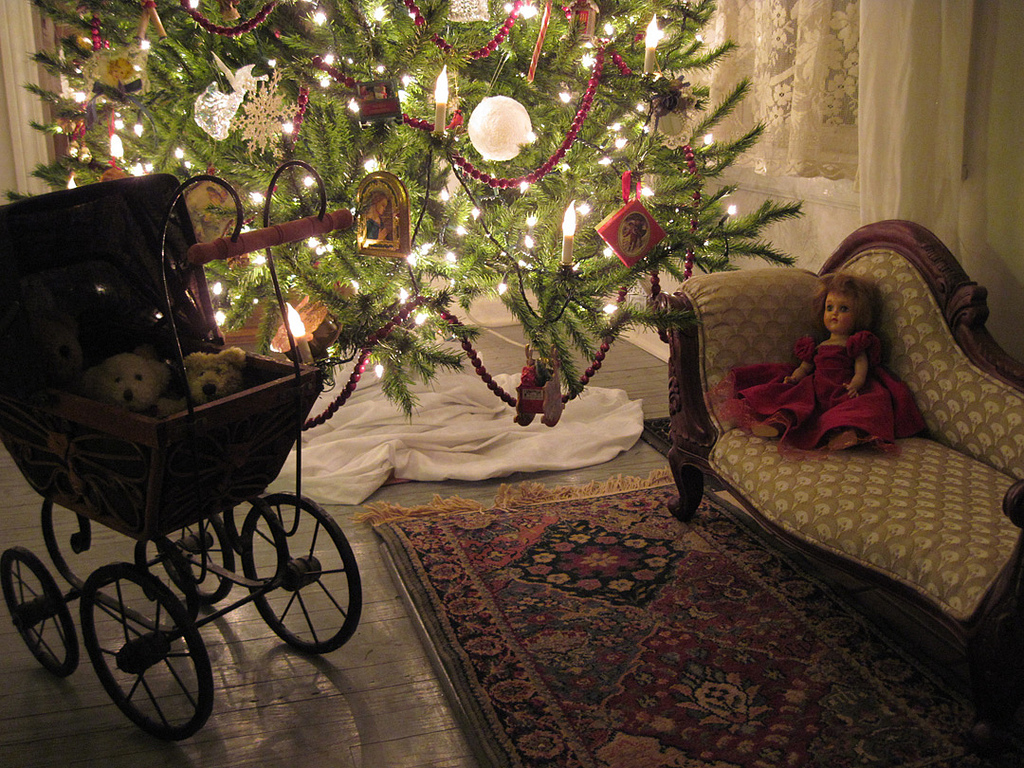
Semplici doni del cuore / Gifts from the heart
Christmas Gift Giving American and Italian traditions
Quando ero una bambina, Natale è stato un momento magico e creare la magia è stato uno dei regali che i miei genitori hanno regalato a me e i miei fratelli. Mia madre faceva i biscotti e decorava la casa con addobbi e ghirlande e ogni sera mio padre preparava un fuoco nel camino con tronchi di pino profumato. Accendevamo le candele, bevevamo sidro e ogni anno ci siamo messi cappotti pesanti per uscire nel freddo e la neve per andare a cantare le canzoni natalizie con amici e vicini di casa. Le notte d’inverno erano lunghi e freddi e si poteva vedere il vapore del respiro quando si camminava fuori, ma le sciarpe e le risate quando abbiamo cantato stonato, ci avevano riscaldato. Le luci scintillavano dappertutto, sul albero nel soggiorno, sul cornicione della casa e sugli cespugli sempreverdi davanti alla casa. Durante il mese di Dicembre eravamo pieni di gioia e c’era una sensazione accresciuta d’anticipazione. Ogni mattina abbiamo aperto una nuova porta del calendario dell’avvento, facendo il conto alla rovescia fino alla visita di Babbo Natale, quando avrebbe lasciato i regali per noi sotto l’albero.
When I was a child Christmas was a magical time and creating the holiday magic was just one of the many gifts my parents gave us kids. My mother baked cookies, decorated the house with ornaments and garlands; in the evenings my father would build fires in the hearth with scented pine logs. We lit candles, drank spiced cider and every year we bundled up to go caroling in the snow with friends and neighbors. The long winter nights were cold and you could see your breath in the air when you walked out side, but our mufflers and the laughter we shared when we sang off key, kept us warm. Lights twinkled everywhere; on the tree in the living room, on the eaves of the house and on the evergreen bushes in the front yard. Through out the month of December we were filled with a sense of heightened anticipation. Each morning we opened a new door of the advent calendar, counting down the days until Santa’s visit when he would leave gifts for us under our tree.
In questo periodo eravamo scoppiando con segreti e schemi mentre preparavamo i nostri regali per la famiglia. C’erano sussurri nei corridoi e progetti nascosti dietro porti chiusi. Per nessun ragione eravamo dato il permesso di entrare l’armadio dei genitori. I nostri regali erano speciali e scelti con cura; tovaglie fatto a mano per mia madre, un maglione fatto a magli per mio padre, binocolo per guardare uccelli per mio fratello, e un bel libro grande per mia sorella maggiore. Per me, c’era sempre una bambola. C’erano bambole di troll, Little Kiddles, bambole di Tami, bambole Giapponesi, bambole di Mary Poppins, Raggedy Ann e un sacco di orsetti di peluchi. Un Natale quando avevo sette anni, ho ricevuto una bambola che apparteneva a mia nonna. È stata una bella confezione di pizzo e porcellana che mia madre aveva accuratamente ristrutturata per me. L’ho chiamata Patsy Ann e continuo a adorarla oggi.
During this time we were all bursting with secrets and schemes as we prepared our gifts for each other. There was whispering in the hall ways and covert projects taking place behind closed doors. Under no circumstance were we allowed to enter our parent’s closet. Our gifts were meaningful and chosen carefully according to each person’s passion; handmade tablecloths for my mother, a crocheted sweater for my dad, a special pair of birdwatching binoculars for my brother and a good book for my older sister. For me, there was always a doll. There were troll dolls, Little Kiddles, Tami dolls, Japanese dolls, Mary Poppins dolls, Raggedy Ann dolls, baby dolls and lots of stuffed teddy bears. One Christmas when I was seven, I received my grandmother’s doll. She was a lovely antique china doll that my mother had painstakingly refurbished for me. I named her Patsy Ann and cherish her still.
Natale è ancora un periodo pieno di magia per me. Però ora tocca a me di creare la meraviglia natalizia per i miei ragazzi. Ora, sono io, che decoro la casa, accendo le candele e faccio i biscotti. Ma anche se sono una madre con tre ragazzi, Natale non sarebbe Natale se non ci fosse una bambola. Come adulto, probabilmente non dovrei ancora giocare con bambole, ma sono giovane al cuore e non me ne importa un fico secco! Così, dopo aver imparato più delle tradizioni italiani natalizi, ho deciso di accettare allegramente un nuovo tipo di bambola – la Befana – e l’ho aggiunta alle mie tradizioni per la festa. L’anno scorso ho ricevuto la mia prima Befana da un amica che abita in Italia. Lei l’ha trovata al mercatino nella piazza Navona a Roma. Ricevere la Befana è stato un bel regalo e ora lei ha un posto speciale nella mia casa a porta l’Italia più vicino a me durante il mese di Dicembre.
Christmas is still a magical time for me, but now it is my turn to create Christmas wonders & miracles for my kids. Now I am the one who decorates the house, lights the candles and bakes the cookies. But even though I am a mom with three boys, Christmas wouldn’t be complete without a doll. As an adult, I probably shouldn’t be playing with dolls anymore, but always young at heart, I don’t really care a fig about that! So, after learning more about Italian holiday customs and traditions, I have cheerfully embraced a new kind of holiday doll – la Befana – and have added her to my holiday traditions. Last year I received my first Befana doll from a friend who lives in Italy. She found the doll in the Christmas market in Piazza Navona in Rome. Receiving la Befana was a wonderful gift and she now has a special place in my home and brings Italy a little closer to me during the holidays.
Secondo la tradizione, Befana è una vecchietta che consegna doni ai bambini in tutta l’italia alla vigile dell’Epifania, la notte di 5 gennaio. Si riempie le loro calze con caramelle se sono buoni e con pezzi di caramelle, colore di carbone, se sono cattivi. È raffigurata come una strega brutta e vecchia che cavalca su una scopa indossando uno scialle e coperta di fuliggine, perché entra nelle case attraverso il camino. Lei è spesso sorridente e porta un sacco pieno di doni. Hmmm…suona familiare? Sembra che la Befana è l’equivalente femminile di Saint Nicolas! Ma essendo una donna, e una governante molto buona, a differenza di Babbo Natale lei pulisce la casa con sua scopa prima che lei se ne vada. In previsione della visita la Befana, i bambini lasciano un bicchiere di vino e un piatto con un po’ di biscotti per lei. Non so, ma sembra che vino sia meglio del latte!
According to Italian folklore, Befana is an old woman who delivers gifts to children throughout Italy on Epiphany Eve, the night of January 5. She fills their stockings with candy, if they are good and with a lump of coal or dark candy if they are bad. She is portrayed as an ugly old witch riding a broomstick, wearing a shawl and covered in soot because she enters the houses through the chimney. She is often smiling and carries a bag filled with gifts. Hmm…sound familiar? Seems like la Befana is the feminine equivalent of Saint Nicolas! But being a woman, and a very good housekeeper, unlike Santa Claus she sweeps up after her self with her broom before she leaves. In anticipation of la Befana’s visit, children leave a small glass of wine and a plate with a some biscotti for her to enjoy before moving onto the next home. I don’t know about you, but but that beats milk and cookies in my book!
La leggenda della Befana va così / The legend of la Befana goes like this…
Una sera di un inverno freddissimo, bussarono alla porticina della casa della Befana tre personaggi elegantemente vestiti: erano i Re Magi che, da molto lontano, si erano messi in cammino per rendere omaggio al bambino Gesù. Le chiesero dov’era la strada per Betlemme e la vecchietta indicò loro il cammino ma, nonostante le loro insistenze lei non si unì a loro perché aveva troppe faccende da sbrigare. Dopo che i Re Magi se ne furono andati sentì che aveva sbagliato a rifiutare il loro invito e decise di raggiungerli. Uscì a cercarli ma non riusciva a trovarli. Così bussò ad ogni porta lasciando un dono ad ogni bambino nella speranza che uno di loro fosse Gesù. Così, da allora ha continuato per millenni, nella notte tra il 5 ed il 6 gennaio a cavallo della sua scopa…
One dark cold winter night, there was a knocking on the door at the house of the Befana. On her porch she found three elegantly dressed men. They were the Magi that came from a far away land who had set out to pay homage to the Baby Jesus. The kings asked the Befana for directions to Bethlehem and the old woman pointed them in the right direction. Despite their urgings that she should accompany them on their journey to see the baby, she declined saying she had too much house work that needed to be done. After the three kings left Befana began to regret her decision and so she set off after the kinds hoping to find them along the road. She began knocking at every door hoping to find the house where Baby Jesus was. Not sure which house he might be found in she left a little gift at each one just in case. From that time on the night of the 5th of January she rides on her broom and continues to search for the baby Jesus.
Natale per me è una celebrazione dell’amore, che si caratterizza per lo scambio di doni. Questi doni sono presentati con sincerità e vengono dal cuore. Non c’è bisogno per i regali di essere grandi o appariscenti per essere una perfetta espressione di affetto. In effetti, alcuni dei migliori regali che dimostrano affetto vero sono i piccoli gesti e le azioni che dimostrano al destinatario che sono speciali e apprezzati. Come nel caso della Befana, a volte il regalo più bello, è un cambiamento dello spirito e un riorientamento della attenzione sulle persone nelle nostre vite. Come la Befana, se riusciamo a mettere da parte i nostri lavori e le priorità personali, e invece fanno sentire le persone nelle nostre vite speciali e preziosi, beh, non è quello che un vero dono dovrebbe essere, e che in realtà quello che dovrebbe essere l’essenza di Natale?
Christmas for me is a celebration of love which is characterized by the exchanging of gifts. These gifts are presented with sincerity and they come from the heart. There is no need for a gift to be big or flashy, to be a perfect expression of affection. In fact, some of the best gifts that demonstrate true affection are the little gestures and thoughtful actions that tell the recipient that they are special and appreciated. As in the case of the Befana, sometimes the best gift is a change of spirit and a refocusing of our attention on the people in our lives. Like the Befana, if we can set aside our chores and personal priorities and instead make the people in our lives feel treasured and special, well, isn’t that what a true gift should be and what the real essence of what Christmas is all about?
Thank you to my friend Gloria from At Home in Tuscany (who just a few days ago received a wonderful early Christmas gift…A new baby!) for inviting me to participate with this post to the Italy blogging roundtable special Christmas event. This is organized, besides Gloria, by the other fabulous rountablers Alexandra from ArtTrav, Rebecca from Brigolante, Melanie from Italofile, and Jessica from why Go Italy . Until 14 December, bloggers are invited to expand upon the topic of “gifts,” somehow connected to Italy, on their blogs. You’re still in time to join!
Voglio ringraziare anche Pam a Eastlake Victorian per il permesso di usare la sua bellissima foto al inizio del blog!
If you like this post about la Befana you might like this one too: Befana Bella Brutta Pupazza
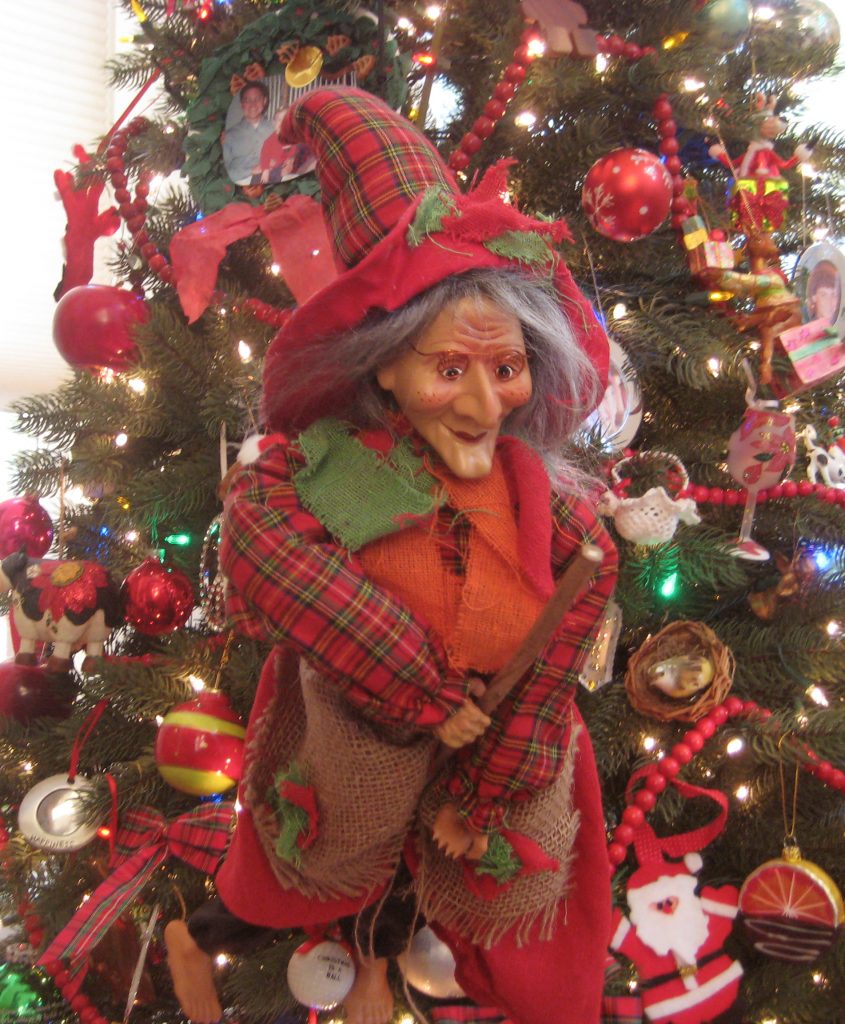
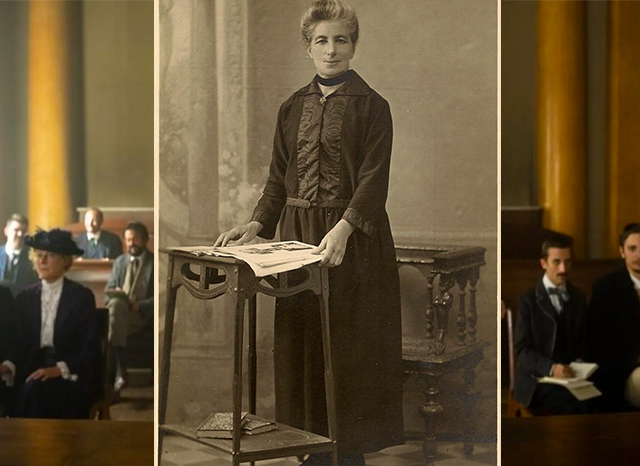
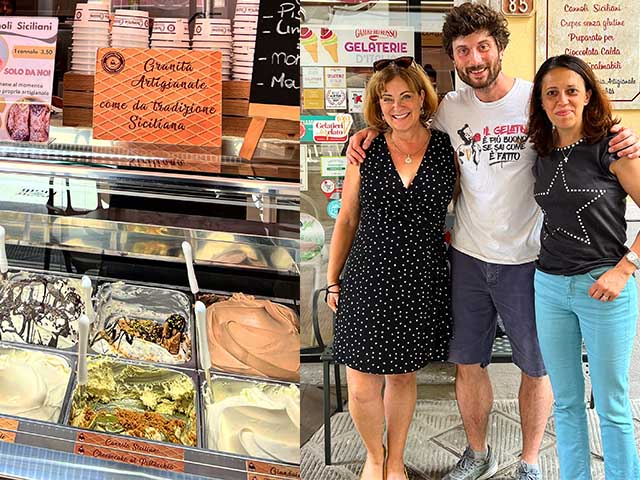



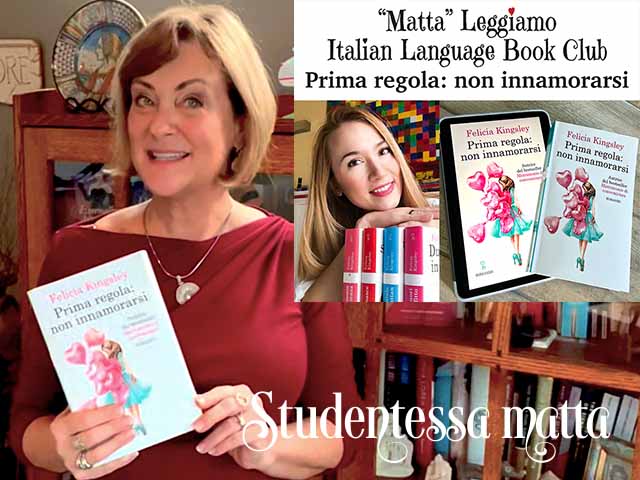






Dalle mie parti, a proposito della Befana, si dice che:
“La befana vien di notte
con le scarpe tutte rotte
porta un sacco pien di doni
da regalare ai bimbi buoni”
anche perché da quando il carbone è divenuto un dolce non può considerarsi un dono “cattivo”.
I doni, qui da me, non li porta né Babbo Natale, che per altro è cosa importata dagli USA, e neppure Gesù Bambino, come nelle altre parti d’Italia, ma è Santa Lucia, durante “la notte più lunga che ci sia”, che con l’asinello visita le case dei bambini per portare i doni.
Dato che i genitori volevano conservare nei figli la fede nell’esistenza della Santa, circolava una storia nella quale si diceva che la Santa avrebbe gettato la cenere negli occhi, accecandolo, la bimbo che avesse trovato sveglio; da tradizione bisognava lasciare un po’ di biscotti e mezzo bicchiere di vino rosso.
Sebbene la tradizione dei doni di Santa Lucia, che ci accomuna con la Svezia, sia nata dalle mie parti verso gli anni ’30 del novecento, il culto era già molto sentito in epoca antica.
C’è un bellissimo racconto di Guareschi riguardo Santa Lucia nei suoi libri del mondo piccolo